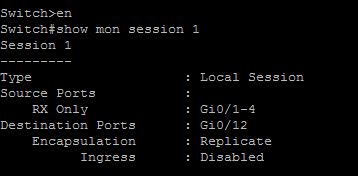- Cisco Community
- Technology and Support
- Networking
- Switching
- SPAN Question?
- Subscribe to RSS Feed
- Mark Topic as New
- Mark Topic as Read
- Float this Topic for Current User
- Bookmark
- Subscribe
- Mute
- Printer Friendly Page
SPAN Question?
- Mark as New
- Bookmark
- Subscribe
- Mute
- Subscribe to RSS Feed
- Permalink
- Report Inappropriate Content
05-15-2016 07:31 AM - edited 03-10-2019 01:08 PM
Hello !, (I asked this question on another forum, but guess It was the wrong place to ask this question)
I am a newbie to IT so forgive me if this is a stupid question. I was asked to characterize the SPAN capability of a Cisco 3560G switch for our specific need. My experiment consisted of using a Spirent Test Center to provide a 4 channel load to the switch which was configured to SPAN four ports placed on VLAN05. The Spirent output consisted of UDP packets with frame sizes between 68-1500Bytes. I knew that the SPAN would probably start dropping packets at aggregate speeds of 1Gbps, so I setup the Spirent ports 1-4 at different line rates with a total speed of 1G and ran for 30 seconds.
The port speeds for each run were as follows: (Mbps)
Run 1: 400, 300, 150, 150
Run 2: 600, 200, 100, 100
Run 3: 800, 100, 50, 50
Observation: (SPAN port drops)
Run 1: Dropped ~5,000 packets
Run 2: Dropped ~4,000 packets
Run 3: Dropped ~2,000 packets
So, My question is: Why is the packet drop greater when the load is distributed vs shifted to one port? I would think that an equally distributed load would of yielded better results or my initial belief was that it wouldn't make a difference because it was about the total load being sent to the SPAN.
Forgot to mention that the Spirent was setup to send bi-directional traffic to itself eg.. Port 1<-->2, Port 3<-->4. The Switch was configured to SPAN only the Ingress traffic.
NOTE: I attached my SPAN session config.for reference. 
Thanks,
Ram
- Labels:
-
Other Switching
- Mark as New
- Bookmark
- Subscribe
- Mute
- Subscribe to RSS Feed
- Permalink
- Report Inappropriate Content
05-15-2016 09:53 AM
Hi Ram -
I'm having trouble picturing your test rig here. Can you post your switch configs, particularly the sections showing your ingress and egress ports, and SPAN setup.
PSC
- Mark as New
- Bookmark
- Subscribe
- Mute
- Subscribe to RSS Feed
- Permalink
- Report Inappropriate Content
05-20-2016 06:38 AM
Paul,
sorry for the delay. I posted my SPAN config if that helps.
Thanks,
Ram
Discover and save your favorite ideas. Come back to expert answers, step-by-step guides, recent topics, and more.
New here? Get started with these tips. How to use Community New member guide

